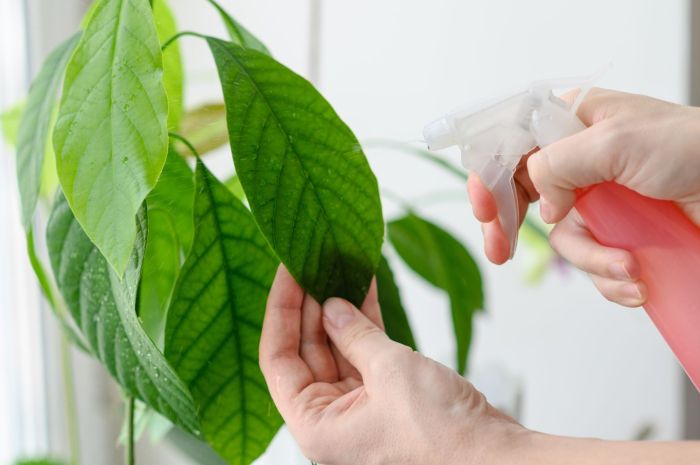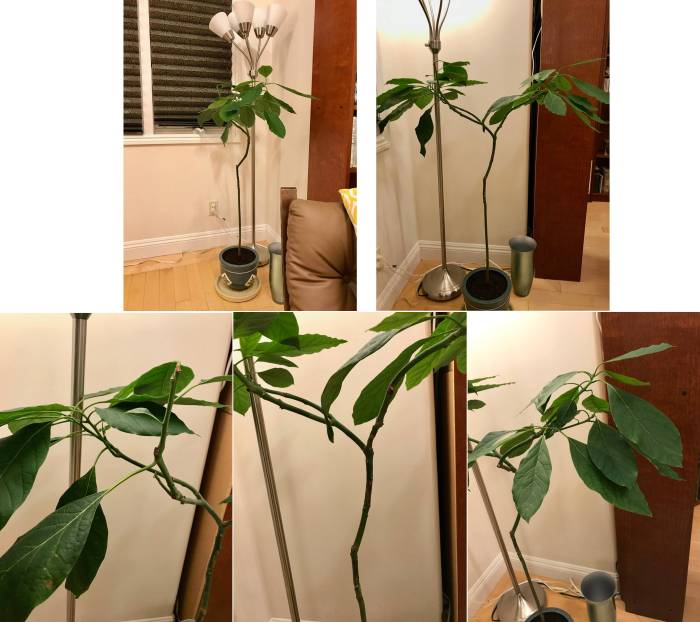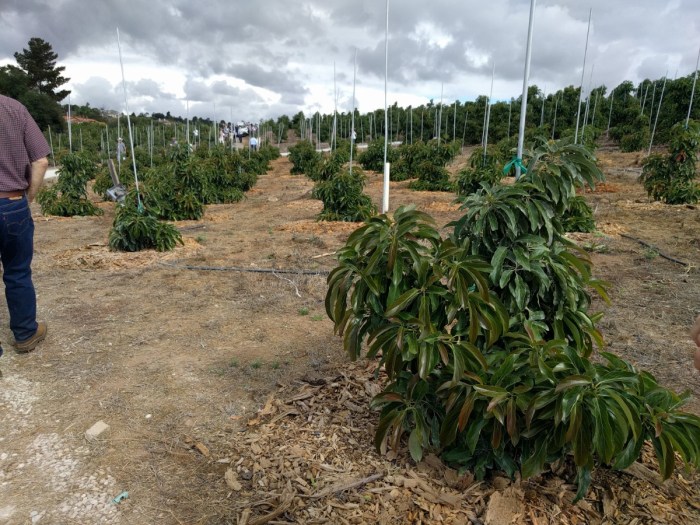How to trim avocado plant – Embark on a horticultural journey as we delve into the intricacies of avocado plant trimming, a crucial practice for maintaining healthy and productive trees. From pruning techniques to timing and troubleshooting, this comprehensive guide will equip you with the knowledge and skills to nurture your avocado plants to their fullest potential.
Understanding the art of avocado plant trimming is essential for maximizing fruit production, promoting plant health, and ensuring a long and bountiful harvest. Join us as we explore the nuances of this horticultural practice, empowering you to cultivate thriving avocado trees in your own backyard.
Pruning Techniques

Pruning is an essential part of avocado plant care. It helps to improve the plant’s health, shape, and productivity. There are different pruning techniques that can be used on avocado plants, each with its own advantages and disadvantages.
To trim an avocado plant, begin by removing any dead or diseased branches. Next, cut back any branches that are growing too long or out of shape. For palm plants, the process is similar: remove any dead or damaged fronds, and trim back any fronds that are too long or out of shape.
Here’s a detailed guide on how to trim palm plants . Finally, for avocado plants, remove any suckers that are growing from the base of the tree.
Heading Back
Heading back involves cutting back the tips of branches to encourage new growth. This technique is often used to control the height and shape of the plant, as well as to promote the development of lateral branches.
To head back a branch, use a sharp pair of pruning shears to make a clean cut just above a bud or leaf node. The cut should be made at a slight angle to encourage water runoff.
Advantages:
- Controls the height and shape of the plant
- Promotes the development of lateral branches
- Encourages new growth
Disadvantages:
- Can reduce fruit production in the short term
- May create an entry point for pests and diseases
Thinning Out
Thinning out involves removing entire branches from the plant to improve air circulation and light penetration. This technique is often used to open up the center of the plant, reduce overcrowding, and promote fruit production.
To thin out a branch, use a sharp pair of pruning shears to make a clean cut at the base of the branch. The cut should be made flush with the trunk or main branch.
Advantages:
- Improves air circulation
- Increases light penetration
- Promotes fruit production
- Reduces overcrowding
Disadvantages:
- Can reduce the overall size of the plant
- May create an entry point for pests and diseases
Timing and Frequency

Determining the ideal time of year to trim avocado plants is crucial for optimal plant health and fruit production. Trimming at the appropriate time minimizes stress on the plant and encourages vigorous growth.
Typically, the best time to trim avocado trees is during the dormant season, which varies depending on the climate. In regions with mild winters, dormant pruning can be performed from late fall to early spring. In areas with colder winters, dormant pruning should be delayed until late winter or early spring, after the danger of severe frosts has passed.
Frequency of Trimming
Establishing a regular trimming schedule is essential for maintaining the health and shape of avocado trees. Young trees should be trimmed more frequently, typically once or twice a year, to establish a strong framework and encourage fruit production. As trees mature, the frequency of trimming can be reduced to once every two to three years.
Trimming too often can weaken the tree and reduce fruit production. On the other hand, infrequent trimming can result in excessive growth, making the tree difficult to manage and potentially reducing fruit quality.
Tools and Equipment

Essential tools for trimming avocado plants include sharp, clean pruning shears or loppers, a hand saw, and a ladder or step stool if necessary. Choose pruning shears with sharp, bypass blades for precise cuts. Loppers are used for thicker branches, while a hand saw is needed for larger limbs.
Trimming avocado plants involves removing excess foliage to promote healthy growth and fruit production. Similarly, pruning jasmine plants requires careful attention to maintain their shape and encourage flowering. Detailed instructions on how to prune jasmine plants can be found here . By following these guidelines, you can ensure optimal growth and a vibrant appearance for both your avocado and jasmine plants.
Proper care and maintenance of tools are crucial to ensure optimal performance and longevity. Keep tools clean and dry after each use, and sharpen blades regularly to maintain their cutting efficiency.
Pruning Shears
Pruning shears come in various sizes and shapes. Select shears that fit comfortably in your hand and provide a clean cut. Bypass shears are recommended for avocado plants, as they create a clean cut that promotes healing.
Loppers, How to trim avocado plant
Loppers are used for branches that are too thick for pruning shears. Choose loppers with long handles and sharp blades. Ensure the handles are comfortable to grip and provide adequate leverage for cutting.
Hand Saw
A hand saw is necessary for removing larger limbs or branches. Choose a saw with sharp teeth and a comfortable handle. Consider the size of the branches you need to cut when selecting a saw.
Ladder or Step Stool
A ladder or step stool may be required to reach higher branches. Ensure the ladder or stool is stable and secure before using it.
When trimming an avocado plant, start by removing any dead or diseased branches. Next, prune any branches that are growing too close together or are crossing each other. You can also trim back any branches that are too long or are growing in an undesirable direction.
For more detailed instructions on trimming a parsley plant, see how to trim parsley plant . After trimming the avocado plant, water it well and fertilize it to help it recover from the pruning.
Troubleshooting: How To Trim Avocado Plant

Trimming avocado plants can be challenging, and problems can arise during the process. To ensure successful trimming, it is crucial to identify common issues and implement preventive measures.
One potential problem is over-pruning, which can weaken the plant and make it susceptible to disease. To avoid over-pruning, trim only dead, diseased, or crossing branches. Additionally, do not remove more than one-third of the canopy at a time.
Disease and Pests
Trimming can sometimes lead to the spread of diseases or attract pests. To prevent this, sterilize pruning tools with rubbing alcohol or bleach before and after use. Additionally, avoid trimming during wet weather, as this can promote fungal growth.
Tree Structure
Improper trimming can also affect the tree’s structure. To maintain a healthy tree, ensure that the main trunk is dominant and that there are no competing leaders. Remove any branches that are growing too close to the trunk or that are crossing.
Health and Safety
Trimming avocado plants can pose potential health and safety risks. It is crucial to take necessary precautions to protect yourself and others.
Protective Gear
Wear appropriate protective gear to minimize the risk of injury or exposure to irritants. This includes:
- Gloves: Protect hands from thorns and sharp edges.
- Safety glasses: Shield eyes from flying debris and plant sap.
- Long sleeves and pants: Prevent skin contact with irritating plant oils.
Handling and Disposal of Trimmed Branches
Handle trimmed branches carefully to avoid cuts or scratches. Dispose of them properly to prevent injury or the spread of pests and diseases.
Consider the following disposal methods:
- Composting: Break down branches into smaller pieces and add them to a compost pile.
- Mulching: Use branches as mulch around the base of the avocado tree or other plants.
- Chipping: Grind branches into small chips for use as a soil amendment or mulch.
Potential Health Risks
Avocado plants contain compounds called persin and urushiol, which can cause skin irritation, respiratory problems, and other health issues.
Take precautions to minimize exposure to these compounds by:
- Avoiding direct contact with plant sap and leaves.
- Working in well-ventilated areas when trimming.
- Washing hands thoroughly after handling avocado plants.
Closure
In conclusion, trimming avocado plants is a multifaceted task that requires careful consideration of timing, technique, and tools. By adhering to the principles Artikeld in this guide, you can confidently maintain healthy and productive avocado trees, ensuring a bountiful harvest for years to come.
Remember, the key to successful avocado plant trimming lies in understanding the unique characteristics of the plant and tailoring your approach accordingly. With patience, precision, and a touch of horticultural expertise, you can transform your avocado trees into thriving specimens that will grace your garden with their beauty and abundance.
Q&A
When is the best time to trim avocado plants?
The optimal time for trimming avocado plants is during the late winter or early spring, when the trees are dormant or just beginning to grow.
How often should I trim my avocado plant?
Regular trimming is essential for maintaining a healthy and productive avocado plant. Aim to trim your plant at least once a year, or more frequently if necessary.
What tools do I need for avocado plant trimming?
Essential tools for avocado plant trimming include sharp pruning shears, a pruning saw, and a pair of gloves for protection.
How can I avoid over-pruning my avocado plant?
To prevent over-pruning, always remove no more than one-third of the total canopy at any given time. Make clean cuts and avoid tearing or damaging the branches.